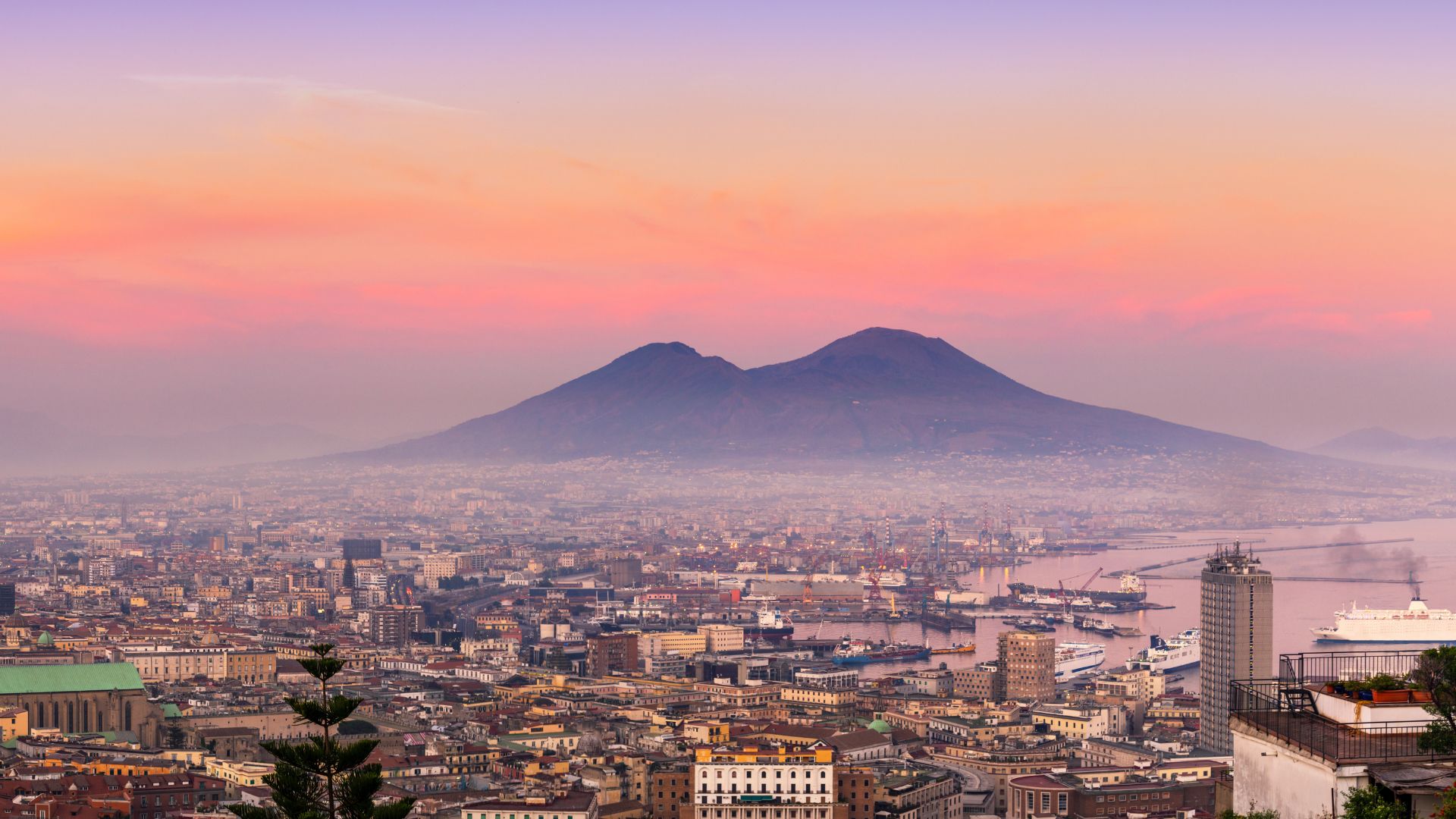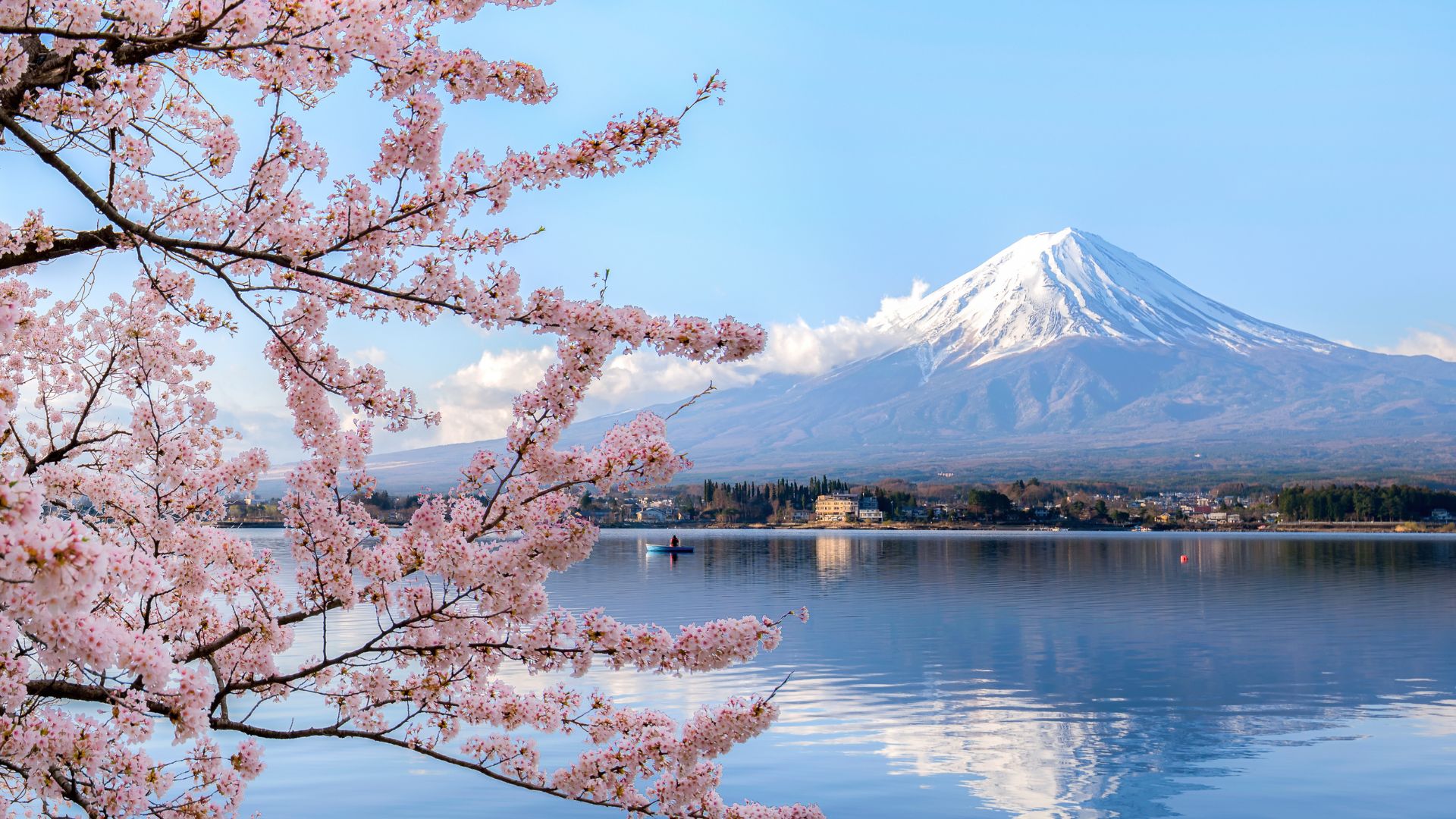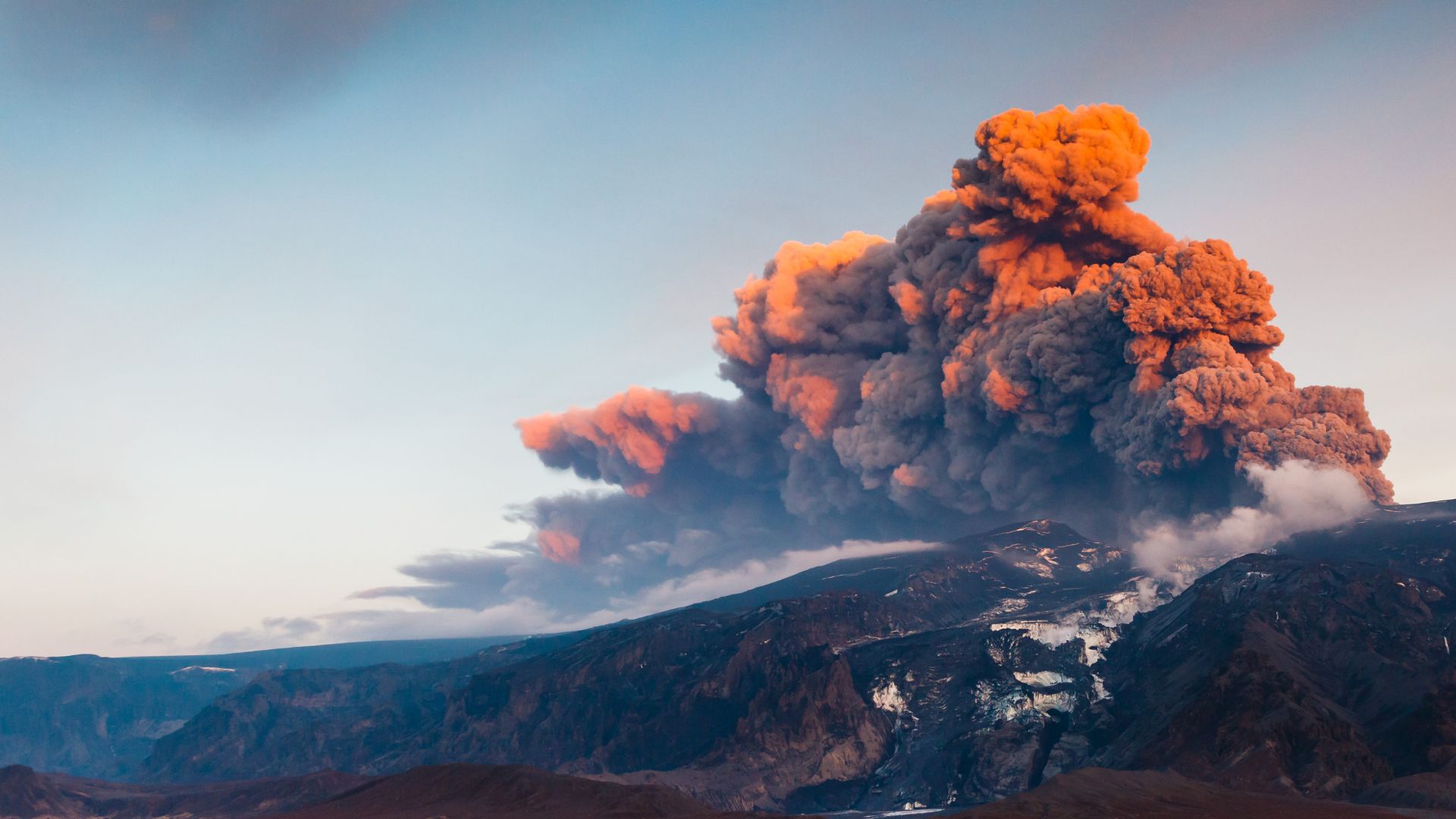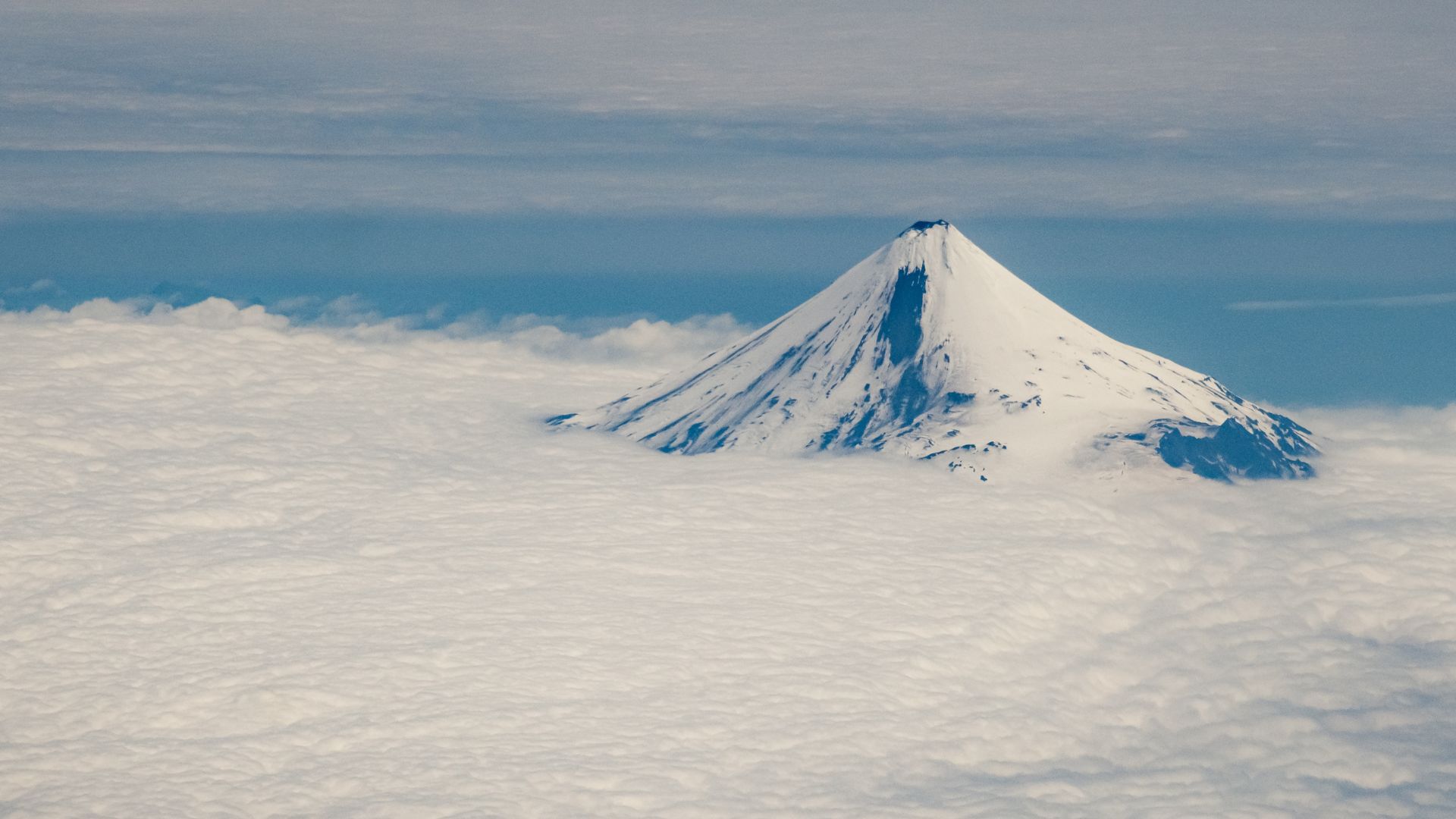
As natural phenomena go, volcanos are one of the most impressive. Caused by a rupture in the earth’s crust, the hypnotic spectacle of an erupting volcano spewing hot lava is one of the most powerful sights imaginable.
While most of the world's volcanos are found underwater, there are more than 1500 active volcanos on Earth, with around 50-70 erupting yearly, according to The British Geological Survey. These conical forms have the power to change landscapes, dramatically creating solidified lava flows, volcanic hot springs and majestic geysers.
New Zealand, Costa Rica, and Iceland are just a few countries where the wonderous effects of volcanic landscapes can be witnessed easily, since hiking routes wind right through these spellbinding scenes. But there are cities with panoramic volcanic views and towns towered over by mighty extinct volcanoes too. So whether you want to photograph these enigmatic landforms from afar or get up close, here’s where to find the most beautiful volcanic landscapes in the world.
Enchanting places where volcanos dominate the skyline
Mount Vesuvius, Napoli, Italy

Napoli vibrates with an energy like no other Italian town and perhaps that’s partly down to mighty Vesuvius looming large in the background. For gorgeous panoramic views of the impressive active volcano that destroyed the Roman city of Pompeii in 79 CE head up to Vomero, a quaint neighbourhood with a handful of stunning restaurants. For an even closer look it’s possible to hike in and around Mount Vesuvius National Park and even peer into the colossal 300 meter wide crater.
Acatenango, Antigua, Guatemala

The UNESCO World Heritage Site of Antigua boasts gorgeous cobbled streets, hundreds of purple-flowering jacaranda trees, colourful markets, beautiful architecture, and top-notch restaurants, and is watched over by not one, but three active volcanos. With two peaks, Acatenango is safe to hike since its last eruption was back in 1972. From the top of the summit, you’ll be rewarded with sublime views of the city as well as the nearby Fuego Volcano which has been erupting continuously for around 500 years.
Mount Tongariro, North Island, New Zealand

Three active volcanos dominate the landscape of New Zealand’s north island including perhaps the most beautiful, Mount Tongariro. Found in the UNESCO World Heritage Site of Tongariro, the sacred mountain peak sits alongside brightly coloured emerald and blue lakes, craters, and incredible trekking paths. Its most recent eruption was in 2012.
Misti, Arequipa, Peru

Snow-capped Misti, visible from one of Peru’s prettiest cities, Arequipa, is a dormant volcano in the Andes mountain range. From the city, the volcano looks almost unreal against the uncrowded skyline and provides the perfect photo opportunity. Misti’s last eruption was way back in the 1600s meaning today it’s a popular hiking route but at 5,800 meters tall it’s not for the faint-hearted and takes at least a couple of days.
Mount Fuji, Tokyo, Japan

Japan’s most loved peak, Mount Fuji can be viewed from Tokyo on clear days when you can’t help but be moved by the almost perfectly symmetrical snow-capped mountain. The popular hiking destination sees tourists, adventurers, and pilgrims from all over the world begin the trek mostly during nighttime, to reach the summit in time for sunrise.
Eyjafjallajökull, Iceland

Filled with over 100 volcanos, Iceland truly is the country to visit for whimsical landscapes, lava flows, and atmospheric hiking opportunities. One of the country’s most famed volcanos, Eyjafjallajökull halted air traffic back in 2010 after it erupted huge ash clouds into the sky. Today, it’s possible to explore the area around this 1,650-meter-high ice-capped volcano on a guided excursion that takes hikers to the summit.
Nevado Ojos del Salado, Argentina-Chile border

Sitting on the border of Argentina and Chile in the Andes, Nevado Ojos del Salado is special for a multitude of reasons; it’s the highest volcano on earth, the highest peak in Chile, and plays host to the world’s highest lake - even more reason to visit. Climbable for only true mountaineers, the volcano’s difficult terrain ensures only a third of all climbing attempts reach the summit. To get a sweeping overview of Nevado Ojos del Salado from the ground, take the Chile Route 31 highway to Paso San Francisco.
Kīlauea, Hawaii

Mighty Kīlauea is one of the most active volcanos on earth and not a sight to be taken for granted. As one of five volcanos that originated underwater to make up the island of Hawaii, it’s possible to visit the national park where Kīlauea sits and even see the glowing molten lava inside. Aim to visit before sunrise to catch the lava glowing orange and red, or after sunsets for a similar effect.
Tunupa, Potosi, Bolivia

Bolivia boasts some of the most stunning scenery in the world, especially around the world’s largest salt flat known as Salar de Uyuni. It’s here you can witness all manner of natural wonders, from bubbling mud, geysers, endless salt flats, and rocks shaped like trees. At 5,300 meters tall Tunupa provides an atmospheric backdrop to Bolivia’s enthralling salt flats, even more so in the rainy season when the layer of water on the salts provides the perfect mirror image of the impressive mountain.
Irazú, Costa Rica

Featuring a bright green crater lake, this mighty volcano that’s easily visited on a day trip from San José is one of the highest active volcanos in Costa Rica. On a clear day, it’s possible to see both the Atlantic and Pacific oceans, while the surrounding park is home to numerous types of hummingbirds, armadillos, rabbits, and foxes.
Mount Shishaldin, Alaska, USA

The utterly stunning remote Mount Shishaldin, with its perfectly symmetrical cone and constant covering of bright white snow, ensures it’s one of the world's most beautiful. Located on Unimak Island in the Aleutian Islands chain of Alaska, it’s moderately active and can often be seen giving off a steady stream of grey smoke.
Mount Rinjani, Lombok, Indonesia

Part of the famous ‘Ring of Fire’, Rinjani is a massive 3,726 meters tall volcano that towers over the island of Lombok, providing climbers with one of the most stunning views in the country. The sulfur lake that sits 600 meters below the crater rim offers an equally enthralling view, made all the more exciting by the sights of a new volcano, Mt. Baru, which has been rising from the waters since the 1990s.
Mount Etna, Sicily, Italy

With an eruptive history that can be traced back 500,000 years, Mount Etna is a true enigma and is now recognised by UNESCO as a World Heritage Site. Erupting on average around once a year, the mighty volcano draws hikers and mountaineers eager to witness lava flows and eruptions at close proximity. And thanks to the richly fertile soil that makes up the land surrounding Etna, Sicily’s fruits and vegetables are some of the best in Italy - so don’t miss a traditional Italian feast when in town.
Piton de la Fournaise, Réunion Island

As one of the world’s most active volcanoes, 500,000-year-old Piton de la Fournaise is revered across the island of Réunion. Rising from the resplendent island, the natural wonder erupts every nine months creating black barren lava fields across the slopes and surrounding countryside.
Mount Ararat, Turkey

While magical Mount Ararat sits in Turkey, it’s famed and adored in neighbouring Armenia where it's a sacred symbol of the nation and graces local brandy bottles. From Armenia’s capital, Yerevan, it’s possible to see the snow-capped dormant volcano rising out of the clouds where it almost appears to float in the sky, and it’s owing to this fact that the volcano has been referenced countless times throughout important works of literature and art. As the highest point in Turkey, the majestic mountain is also believed to be the spot where Noah’s Ark landed after the great flood giving it spiritual significance to Christians the world over.
Cotopaxi, Latacunga, Ecuador

Visible from Quito on a clear day, Cotopaxi is part of the chain of volcanos known as the Pacific Ring of Fire. But what’s unique about Ecuador’s second-highest mountain is the fact that it has one of the few equatorial glaciers in the world. Culturally significant Cotopaxi has been worshipped for centuries as it’s believed it can send rain to aid the surrounding land’s fertility.
Pico do Fogo, Cape Verde

The volcanic archipelago of Cape Verde swirls in stories about eruptions and lava flows and is there any wonder when three volcanoes call the island home? Fogo, Brava and Santo Antão all vie for attention but Pico do Fogo is the most impressive and the most active. Hire a guide to hike to the top of this volcanic giant where you’ll witness lunar landscape and stunning views.
Mount Kilimanjaro, Tanzania

One of the most famous volcanoes on earth due to its epic size, Tanzania’s Mount Kilimanjaro draws hikers year-round, each eager to reach the summit. But you don’t need to be a hiker to appreciate this stunning mountain - to get the ultimate shot, head to Kenya’s Amboseli National Park, where views of the mountain are unrivalled.
Poás, Costa Rica

Pretty Poás is famous since it features one of the largest craters in the world and two crater lakes filled with the brightest turquoise water you can imagine. A crater viewing area provides incredible views and you can often witness volcanic activity including steam and smoke rising from the cone provided it’s not too foggy.
Deception Island, South Shetland Islands

Boasting an incredible name and located in the remote South Shetland Islands, this natural harbour is the result of an underlying active volcano. The curious sight sees around 15,000 visitors a year, each eager to witness one of Earth's most incredible natural phenomena.
Hekla, Iceland

Hekla has erupted more than any other in Iceland, making it stand out from the crowd in a country of over 130 volcanos. Since the hike to the summit only takes around three hours, it’s a popular day trip destination for hikers staying in Reykjavik.
Mount Pinatubo, Luzon island, Philippines

A must-visit when in the Philippines, especially to witness the magical crater lake at the summit, this pretty volcano is surrounded by the most exquisite lush countryside providing endless photo opportunities. But it’s also worth remembering its tragic past when in 1991, 847 people were killed from a large ash and smoke eruption that devastated the area for years.
Mount Nyiragongo, Democratic Republic of the Congo

Close to the border with Rwanda, Mount Nyiragongo rises 3,400 meters high and contains a deep red liquid lava pool that has proved fatal in years gone by. These days, it’s possible to hike to the top in around six hours but a guide is recommended since the volcano is still active.
Mount Pico, Pico Island, Azores

One of the easiest volcanos to hike solo and without a guide, Portugal’s highest peak, Mount Pico, can be summited in around seven hours. Dormant since 1720, Pico has a near-perfect cone and can be seen clearly from the rest of the island should you want to sit back and relax rather than pull on your hiking boots.
Mount Kelimutu, Indonesia

Highly aesthetic, even verging on extra-terrestrial, are Mount Kelimutu’s colour-changing lakes - each believed to be the resting place of departed souls. Sometimes blue, red, white, or green you never know what you’re going to get until you’re up on the mountain itself. As part of the Kelimutu National Park and surrounded by pine forests, the slopes of the volcano protect an abundance of endangered animals and birds.
Barren Island, Andaman Islands

As the only confirmed active volcano in the Indian subcontinent, volcano buffs will surely want to witness this true wonder of the world. 2022 marked Barren Island’s most recent eruption but since it’s uninhabited by humans there was minimal damage. The harsh environment of the island means only a few animals thrive here but curiously there is a small population of goats surviving on fresh water springs.
Hallasan, Jeju Island, South Korea

A sanctuary of biodiversity and scientific intrigue, South Korea’s Hallasan Mountain is surrounded by stunning national parkland that’s ideal for exploring on foot. The mountain can be seen in every spot on the island of Jeju, but since it sits at a height of 1900 meters, its peak is often covered by clouds.
Osorno, Chile

Marking the beginning of Chilean Patagonia, Osorno is a playground for skiers and hikers, all of which flock to the majestic slopes throughout the year. Nearly perfectly symmetrical the great cone stuns during summer months when its snow-capped peak gives way to lush countryside.
Volcano of Santorini, Santorini, Greece

Santorini’s streets beg to be photographed but the island is also home to one of the most beautiful natural wonders across the Greek Islands - the magical Volcano of Santorini. The craters of the volcano can only be reached by boat since they’re located on two small islands made entirely of black lava, but it’s well worth the journey for the hypnotic scenery that awaits.
Ampato, Peru

Now dormant, the towering Ampato was previously used as a place for human sacrifice during Inca times according to a paper by José Antonio Chávez, which reveals sacrifices were a way to calm mountain spirits during eruptions of the neighbouring volcano, Sabancaya. It’s possible to climb this volcanic mountain in around three days provided you’re in good physical shape but climb with respect since this is a sacred spot.
Krakatoa, Indonesia

Famed for its violent eruption in 1883, one of the most devastating volcanic eruptions in human history, Krakatoa has been at the forefront of volcanic exploration ever since. These days adventurers and tourists head to the volcanic island to hike the once-deadly peak before cooling off in the marine-rich crystal clear waters that surround the island. Just a few hours from the bustling city of Jakarta, Krakatoa provides an idyllic escape once the city gets too much.
Nevado del Huila, Colombia

Covered by a glacier ice cap, Nevado del Huila is Colombia’s highest volcano and is visible from the bustling city of Cali. Due to its size and unpredictability, it’s best viewed from a distance or even better, from the air where the impressive peak juts through clouds creating a magical effect.







